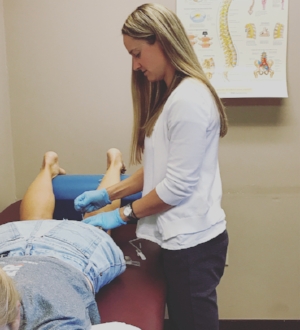Restorative Techniques for Tissue Repair
In my previous post, “A Physical Therapist’s Guide to Injury Management,” I discussed a general paradigm I use while deciding an appropriate treatment plan for the athlete. With this write up, I will describe the treatment techniques I suggested in more detail, beginning with my first area of concern: tissue tension. Whenever I note muscular dysfunction which may include trigger points, inflammatory response along a peripheral nerve pattern, acute inflammation from recent trauma (ie: sprained ankle) or tenderness to palpation of a region I begin with manual therapy interventions. Throughout this blog I discuss treatment modalities you may want to seek out to manage injuries.
1. Integrative Dry Needling. This is an intramuscular treatment techniques that works both systemically, to restore body system homeostasis, and locally to address soft tissue dysfunction. Integrative dry needling elicits a physiological response to remodel injured tissue by reducing stress to the tissue, normalizing inflammation, and by the replacement of injured tissue with fresh tissue. I use this treatment method to reduce trigger points, break up tissue contracture or adhesions, address nerve pain, and for acute inflammation such as a fresh sprain/strain of a joint or muscle. I also use Integrative Dry Needling specifically for sports performance as a way to destress the tissue from training response.
Here I am performing Integrative Dry Needling for a hamstring strain.
2. Tissue mobilization and massage. This is a superficial, noninvasive approach to restoring tissue function. As with any goal of tissue mobilization, and the common massage, the focus is to restore tissue perfusion, muscle length, and enhance blood and lymphatic circulation.
3. Active Release Technique (ART). The goal of ART is for the practitioner to manipulate the soft tissue of the neuromuscular system to correct tissue tension, texture, movement, and function. If you’re familiar with ART, that’s likely because you’ve had it performed at the finish line of a race or Ironman event.
4. Self Mobilization. Self tissue mobilization is a way for the athlete to restore tissue functional at home, outside of the clinic, without needing a clinician available to them. I commonly prescribe some sort of self tissue mobilization as a home exercise program. Common areas of intervention are the plantar fascia, calves, upper trapezius muscle, quadriceps, and glutes. This is where it’s helpful to have tools to assist in self treatment. A golf ball is great for the plantar fascia. I typically suggest a theracane for active trigger points that require a specific treatment region. For large, dynamic muscle groups, such as the quadriceps, a generalized approach to tissue restoration can be performed with a foam roller. This is an excellent technique for managing an injury to control and reduce symptoms.
Self tissue mobilization for the calf.
I hope this post helps guide your approach to conservative care when dealing with tissue dysfunction that is impeding your performance. If you’d like to further discuss what intervention may be right for you, check out my services which include Return to Sport, One-on-One Coaching, and Injury Consultation. Here is to a healthy 2018 season!


